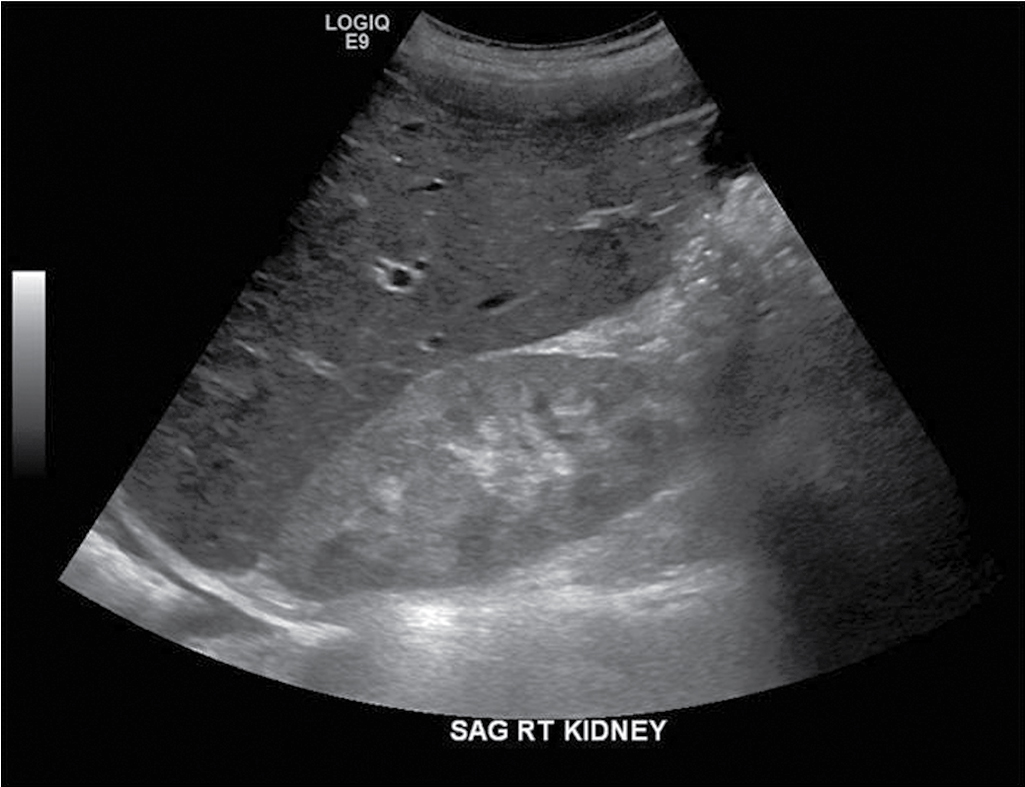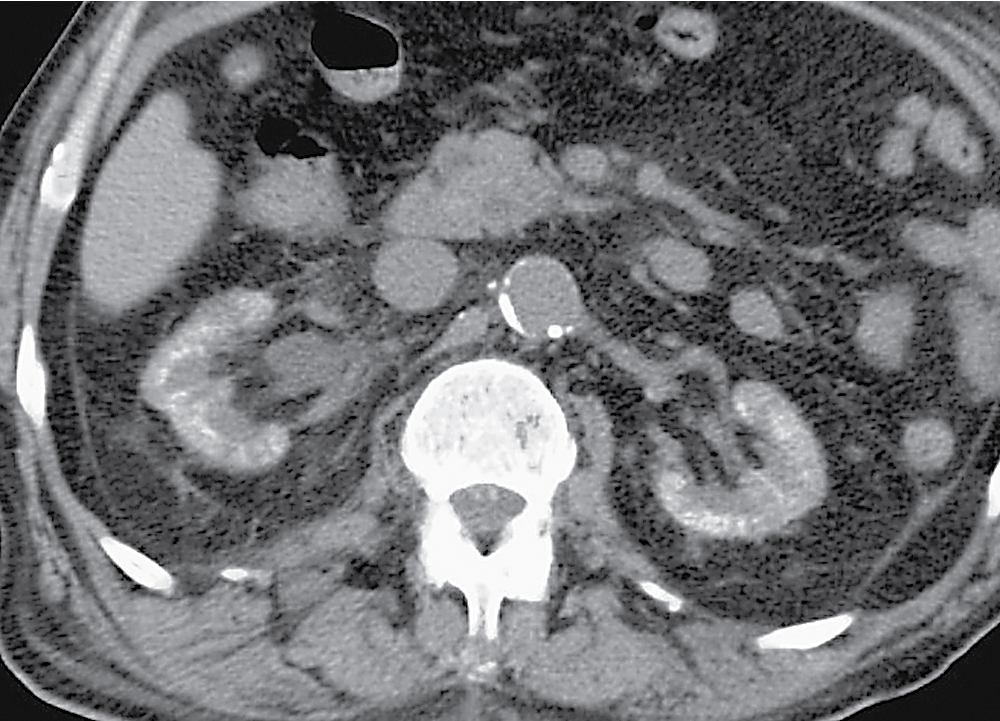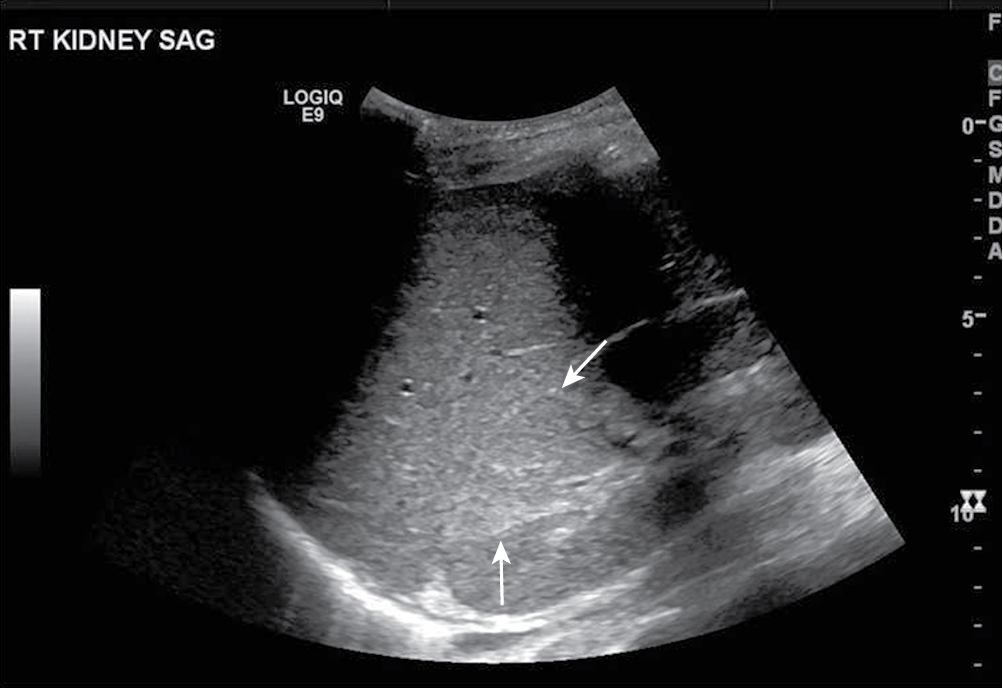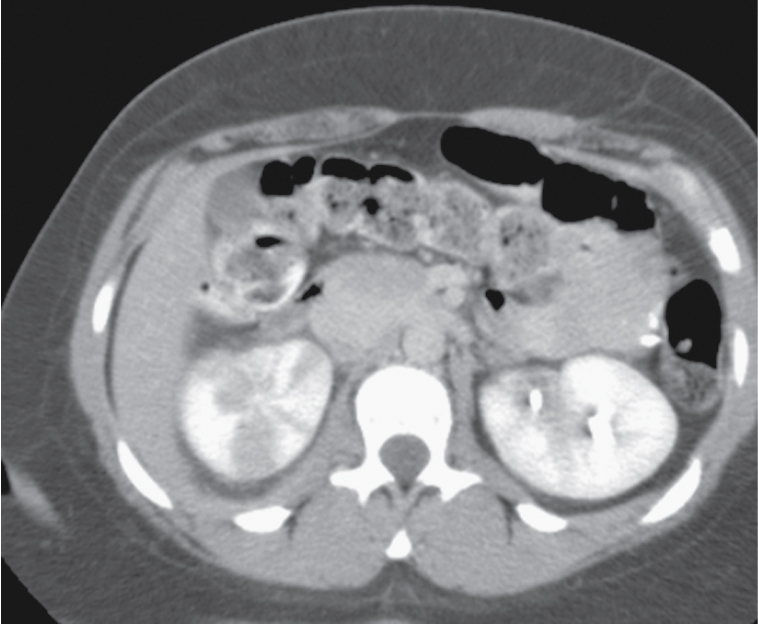Physical Address
304 North Cardinal St.
Dorchester Center, MA 02124
The renal parenchyma can be divided into an outer region called the cortex and an inner region called the medulla.
Parenchymal abnormalities can be divided by their involvement.
Entire kidney (glomerulonephritides, amyloidosis, drugs, and rejection).
Primarily cortical.
Primarily medullary.
Glomerulonephritis (GN) is a complex spectrum of disorders characterized by inflammation of the glomeruli.
It is a histological/pathological diagnosis.
Imaging can play a role in excluding other causes of renal impairment.
The kidneys may enlarge with acute GN, and tend to be small with chronic GN.
Plain radiographs play a limited role in evaluating renal pathology. Typically, calcifications projecting over the renal shadows may be identified as nephrolithiasis or in a pattern suggestive of nephrocalcinosis.
Intravenous urography will highlight pathologies in the renal collecting systems. The kidneys may show poor contrast excretion, depending on the stage of renal failure. Apparent expansion of the renal sinus fat (“renal lipomatosis”) can be a secondary sign of diffuse atrophy because of chronic renal disease ( Fig. 25.1 ).

The primary utility of ultrasound is to evaluate for hydronephrosis (postrenal cause of renal failure) and vascular abnormalities (inflow or outflow). In the setting of renal failure, the absence of either suggests an intrinsic renal parenchymal disease. In chronic GN, the renal parenchyma may show increased echogenicity and usually has some cortical volume loss. The normal renal echogenicity is typically equal to the adjacent liver or less than the adjacent spleen.
Doppler ultrasonography can assist in the differential diagnosis of acute renal failure. The normal resistive index (RI) of the kidney is around 0.6 with 0.7 generally considered the upper threshold. Abnormally elevated RI can be seen in a large number of conditions, including prerenal (renal artery stenosis, renal vein thrombosis), postrenal (obstruction of urinary flow from calculi, masses, etc.), and parenchymal causes. The RI can also be normal in acute or secondary GN.
Computed tomography (CT) may show normal or bilateral renal enlargement in acute GN. Noncontrast CT may show cortical calcification in chronic GN, and typically show small kidneys with smooth contour. With chronic pyelonephritis, scarring may develop.
Changes in renal size and enhancement can be seen with diffuse renal disease, similar to CT.
Noncontrast technique is useful to evaluate calcifications.
CT urography may be helpful in evaluating the renal collecting system, and has mostly replaced the role of intravenous pyelogram (IVP).
Noncontrast CT.
50 mL of intravenous (IV) contrast followed by an additional 50 mL 6 to 8 minutes later (“split bolus”).
Images acquired 60 to 90 seconds following the second dose of IV contrast.
Can be primary or secondary.
Primary GN: Intrinsic to the kidney, usually immune mediated (such as poststreptococcal glomerulonephritis [PSGN]).
Secondary GN: Associated with systemic disease, certain infections, drugs, systemic disorders (systemic lupus erythematosus, vasculitis), or cancers.
Can be acute, rapidly progressive, or chronic.
Acute GN.
25% to 30% of all cases of end-stage renal disease (ESRD) in the United States.
PSGN is the most common acute cause.
Chronic GN.
Accounts for 10% of patients on dialysis.
Normal or increased renal parenchymal echogenicity ( Fig. 25.2 ).

Normal or bilateral renal enlargement in acute GN.
Normal or bilateral atrophy with cortical calcifications in some cases of chronic GN ( Fig. 25.3 ).

Same as CT, although calcifications may be less easily identified.
Infection of the renal parenchyma and renal pelvis, inclusive of the tubules and interstitium.
Most common cause is a gram-negative organism ( Escherichia coli , Proteus, Klebsiella, Enterobacter).
Most cases are ascending infections from the lower urinary tract.
Can be uncomplicated (no permanent sequelae) or complicated.
Imaging unnecessary for uncomplicated pyelonephritis.
Imaging used for confusing presentation or deterioration despite therapy.
Usually multifocal, but rarely can be focal, mimicking a mass.
Can be normal (negative study does not exclude pyelonephritis).

Contrast enhanced CT (CECT) is the imaging study of choice.
“Striated nephrogram” appearance is classic ( Fig. 25.5 ).

Renal cortical scintigraphy technetium99m dimercaptosuccinic acid (Tc99m-DMSA) may show photopenic areas, which can represent acute infection (or scars).
Typically used for chronic rather than acute pyelonephritis.
Renal injury induced by recurrent or persistent renal infections.
Progressive renal scarring may lead to ESRD.
Associated with major anatomic abnormalities, urinary tract obstruction, renal calculi, renal dysplasia.
Can be focal, multifocal, or diffuse; can involve one or both kidneys.
Affected portion is typically scarred and contracted.
Become a Clinical Tree membership for Full access and enjoy Unlimited articles
If you are a member. Log in here